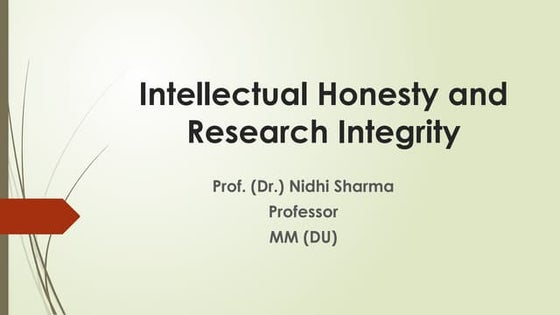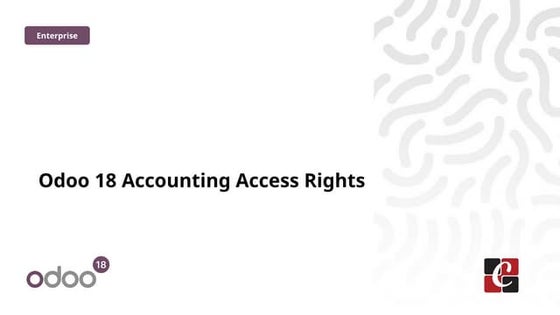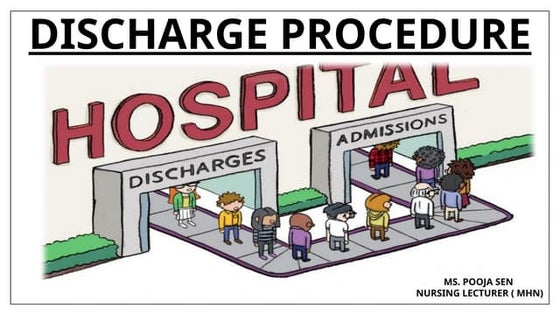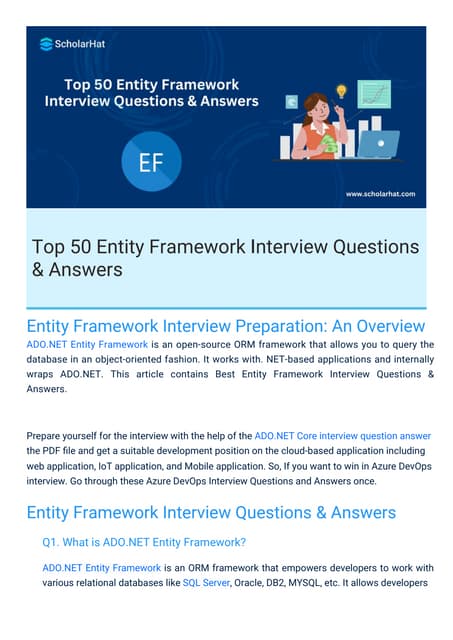Faculty Presentation
- 1. James Perry Research & Teaching Portfolio Raising the vision of humanities scholars through digital research and publication. Follow along at: www.jamesperry.uk/byu/
- 2. Overview 1. Background 2. Research a. Migration into Britain, 1851-1911 b. âBritish Saints in the Great Warâ c. Others 3. Teaching a. Research Informed Teaching (RIT) b. Postgraduate Digital Humanities c. Undergraduate Courses & Summer Schools 4. Academic Citizenship 2 âWhat use could the humanities be in a digital age? University students focusing on the humanities may end up, at least in their parents' nightmares, as dog-walkers for those majoring in computer science. But, for me, the humanities are not only relevant but also give us a toolbox to think seriously about ourselves and the world.â Nicholas Kristof, NY Times, 13 August 2014
- 3. Hello! Nice to meet you 3 About me; I am a historian that specialises in utilising digital humanities within my research. I joined the Church in 2006, in Somerset, England. Between 2008 and 2010, I served a full-time mission in the England Manchester Mission. My wife, Debs, and I were married in 2011, we have one daughter, Leah (2), and we are expecting another baby girl in May 2017. I completed my BA History (Hons) at Lancaster University, and graduated with First Class honours, from which I received a financial award for my MA and PhD, also at Lancaster. My MA History thesis was on the subject of religious nonconformity, for which I was awarded the M.F. Howson Prize. My MA was completed in 2014 with distinction. Currently, I am finishing my doctoral thesis. Feel free to contact me: ⊠www.jamesperry.uk ⊠james.perry@Lancaster.ac.uk ⊠@JamesAGPerry
- 4. 4
- 5. 5
- 6. DIGITAL FLUENCY âThe ability to understand, make judgements about, select and use appropriate technologies and technological systems for different purposes.â 6
- 7. The Digital Humanities Schema or âthe dh meta-discussionâ The âMakersâ Coders/programmers, âtechiesâ. Might come from non-traditional humanities backgrounds. They create the tools used by digital humanists, which they also might identify as. This can include self- taught scholars. The âConvertâ Received traditional training, made the transition to using digital tools at some point. Utilises both approaches in their research. Understands the opportunities and limitations of DH and makes judicious decisions accordingly. The âBorn in the Faithâ Formal training in digital & traditional humanities. Small but growing group that are emerging from the proliferation of DH centres. Come prepared with critical understanding of the field and skills necessary for projects. 7 1. A knowledge site 2. A digital edition of a text or texts 3. A database 4. A semi-linear, customizable narrative that includes text, images, audio, and/or video 5. A large-scale text analysis or topic modeling project 6. A geographic mapping site 7. A digital 3D model 8. An online event 9. A crowdsourcing project Paige Morgan, âWhat Digital Humanists Doâ, Demystifying Digital Humanities, 2 September 2013, available at: http://www.dmdh.org/2013/09/what-digital-humanists-do/, [accessed: 3 April 2017]. What is digital humanities? How do digital humanities differ from traditional âhumanitiesâ? What additional value is provided? What is the future for DH? Issues; usability, accessibility, critical reflection, fair citation, inclusivity, Divergent channels of communication and networking, reflect its interest in the digital; GitHub, Twitter, open- access digital journals, listservs, and others. The âTraditional Scholarâ Traditionally trained scholars, might utilise digital resources, search engines, and so on. May have interest, but feel uncertain how DH would relate to their work. Some might view be critical of the growth, interest in, claims of, and perceived self-interest of DH. E.g. Brian Lennon
- 10. â âResearch is formalized curiosity. It is poking and prying with a purposeâ Zora Neale Hurston, Dust Tracks on a Road (Philadelphia: J. B. Lippincott, 1942), 143. 10
- 11. British Saints in the Great War May-July 2016 âŠContext: No memorials or remembrance events for British LDS soldiers who died during the war, or any idea who they were. âŠQuestions: How many people were involved in the war? How many died? In what ways did members respond to the increased demands placed upon them? âŠSource: Millennial Star, weekly publication for the duration of the war, Church History Library archive, and others. âŠMethodology: Antconc to identify and extract death notices from OCRâd copies of the Star. Matched individuals to the 1911 Census, and the Commonwealth War Graves commission database. Used QGIS to map deaths, branches, members, and conferences. âŠFindings: 63 British LDS members died during active service, hundreds of Sisters were called as missionaries, and much more. âŠOutputs: Boundary shapefiles of the British Conferences, LDS branches shapefile, social media posts (British Latter-day Saint History), article forthcoming in the Journal of Mormon History, presentations to LDS and non-LDS audiences, including academics at Oxford University. 11
- 12. British Saints in the Great War May-July 2016 âŠUsing GNU Wget, I used a simple command to mass download all of the Millennial Star issues in .txt and pdf format, which are available on archive.org (1901-1969). âŠImported the documents into ArcGIS, which allowed keyword and phrase searching, but also a whole suite of corpus linguistics tools. âŠRequired the blending of humanistic close reading and analysis, with the digital and semi- automated processes of acquiring and processing the data. âŠA batch geocoder was used to pair the locations identified within the text with coordinates. âŠQGIS was used to then plot deaths, branches, boundaries, and other data onto a georeferenced basemap. âŠDifferent forms of analysis could then be carried out. 12 8% 4% 4% 5% 7% 8% 2% 7% 10% 19% 7% 5% 13% 0% 2% 4% 6% 8% 10% 12% 14% 16% 18% 20% % of LDS Casualties per total local Priesthood of each Conference, 1918 J. E. Simister (left) with son George Simister (right) Private Archie Brammer
- 13. Becoming British April 2016-Current âŠUtilises batch geocoding âŠHas been used in teaching GIS âŠRaises questions of integration â where did migrant communities seek to integrate? âŠHow did different nationalities differ? 13
- 14. Migration, Segregation, and Integration, 1851-1911 October 2014-Current 14 âŠCase Studies: Whitechapel, London & Newcastle-upon-Tyne, Northumberland. âŠApproach: Data led project ï What can we learn from the I-CeM data about migrant communities? âŠKey Findings: Migrants were rarely segregated within households, only 15% lived in exclusively migrant composed households. âŠMigrants remained predominantly male, except for the French, who were largely composed of females. âŠOccupations, such as sugar refining, were heavily segregated, others were underrepresented. âŠUsed a series of logical statements to ascertain the number of second-generation migrants, in some places this was as high as 35% of the population. âŠMigrant groups varied significantly in their attempts to integrate, some such as Germans, actively integrated, others such as Russians and Italians remained spatially and demographically segregated. To what extent were foreign-born migrants segregated from or integrated with the host society? 1. First critique of the largest dataset of British socio- economic data. 2. Utilised micro census data for individual household plotting. 3. Offered national level analysis of occupations via micro census data.
- 15. The European Mormon Arts âŠPurpose: To amass the forgotten Mormon art produced in Europe, by members and missionaries, since the restoration, in all its forms. âŠImpact: Reinvigorate interest in the arts amongst Latter-day Saints, and to memorialise the contributions of previous generations of members. 15 Published Poetry, Stories, and Songs ⊠De Ster (Dutch) 1896-1967 ⊠Der Stern (German) 1869-1967 ⊠Millennial Star (United Kingdom) 1840-1970 ⊠Skandinaviens Stjerne (Scandinavia) 1851- 1967 Music and Song ⊠Reimagining long forgotten pieces, this might include working with the School of Music. ⊠Breathing life into the works produced by early Latter-day saints, revealing their thoughts, desires, and beliefs in alternative forms. âŠc Exploring the wealth of personal materials that exist within collections and holdings of the Church.
- 16. British LDS Births, Baptisms, Marriages, and Deaths Hidden Data, Hidden Stories October 2016-Current Data Collection Processing Data Linkage Analysis 16 âOur history begins before we are born. We represent the hereditary influences of our race, and our ancestors virtually live in us.â James Nasmyth, 1883
- 17. German Migrants and Criminality in London, 1887-1895 in collaboration with Ruth Byrne, Lancaster University Identifying Crimes and Criminality Utilised CQPWeb to conduct a twenty- word proximity search of âGermanâ or âGermansâ within the Reynolds Daily Newspaper, with the following terms; [arrest, arrests, arrested, crime, crimes, criminal, imprison, imprisons, imprisonment, imprisoned, custody, court, courtroom, prisoner, prisoners, convict, convicts, convicted, jury, judge, coroner, magistrate, police, trial, prosecutor, defendant] âŠTotal Germans: 29,032 -Males: 16,129 (55.6%) -Females: 10,598 (36.5%) -Unknown: 2,305 (7.9%) 17 Exploring the German community within the context of crime; 1. Were they victims, perpetrators, or witnesses? 2. What types of crime were they connected to? 3. How did the occupations of German criminals relate to the broader community? 4. Where were crimes committed?
- 18. US Influences in the European Church December 2016- Current âŠHow do we reduce anxieties amongst prospective and less- active members who think that we are an âAmerican Churchâ? âŠWhat cultural norms and practices of the Church can be changed within Europe to better reflect indigeneity? 18 Finding faith affirming ways to redress cultural frustrations that have emerged since the correlation program of the 1960s/70s. âŠCollaborative project formed in December 2016 from a BYU sponsored seminar at the London Centre. âŠScholars from UK, Norway, and Italy. Additional support from; âŠProfessor James Faulconer, BYU âŠWheatley Institute
- 19. 19 2. Teaching
- 20. â âIf you're teaching today what you were teaching five years ago, either the field is dead or you are.â - Noam Chomsky 20
- 21. Research Informed Teaching (RIT) Co-researchers/Collaborators âTreating students as co- researchers supports student engagement within and beyond the formal curriculum, furthering knowledge and understanding.â Utilising current research leads to the formation of valuable employability skills for students. Cutting edge research offers innovative and engaging subject material for classes, and can challenge students to face real- life research issues. Pedagogy I am actively developing tools and methodologies that move students from passive receivers, to active and engaged learners. My teaching styles rotate to reflect the learning objectives and needs of the students. Lectures, workshops, seminars, lab sessions are adapted to facilitate the most effective learning experience. My teaching pedagogies evolve in response to new research, and provide high quality learning experiences for students. Associate Fellow of the Higher Education Academy (HEA) Professional development and training is a marker of a conscientous educator. I am passionate about personal development, which includes staying up to date with pedagogical developments and debates within the field of higher education. Supported Learning Practice (SLP) course completed in January 2017. Due to be awarded in July 2017. 21 - research-led â where students are taught research findings in their field of study; - research-oriented â where students learn research processes and methodologies; - research-tutored â where students learn through critique and discussion between themselves and staff; and - research-based learning â where students learn as researchers.
- 22. Digital Humanities Teaching Experience Digital Research Skills for Historians (HIST 492) âŠCreated and convened the module in the academic year 2015-2016. âŠIntroduced students to spreadsheets, and quantitative data for use within historical research. Spatial Technologies for Historical Analysis (HIST 429) âŠCo-convened and co-taught the module with Dr Leif Isaksen and Alexander Reinhold in the academic year 2016-2017. âŠTopics include; Spreadsheets, relational databases, GIS, and linked open data. Using Digital Texts as Historical Sources (HIST 426) âŠCo-taught the module with Ian Gregory, Professor of Digital Humanities in the academic year 2016-2017. âŠTopics include; HTML, XML, texts and databases, writing for the web, and corpus linguistics. 22
- 23. Undergraduate Teaching Experience & Summer Schools âŠHIST 100: From Medieval to Modern: History and Historians âŠAn introduction to history as a discipline, with a broad chronological and thematic survey. âŠUnderlying the course is a dedicated skills syllabus, which advances students understanding of what it means to be a historian. The course also introduces students to the different approaches to historical research that exist. I assisted with the teaching of the Lancaster University European Research Council Summer School in GIS for the Digital Humanities, 2015, 2016, and again in 2017. 23 The Medieval World, c. 750 to c. 1450 1. Self and Society in the Age of Charlemagne 2. Kingship, Government and Society 3. Religion and Society in the Middle Ages 4. The Significance of the Vikings 5. War and Peace in Stateless France Early Modern Europe, c. 1450 to 1789 6. Life, Sex and Death in Early Modern Europe 7. Religious Turmoil and State Formation 8. Changing Ideas: Re-Arranging the Universe 9. The Enlightenment 10. Overseas Expansion: from Columbus to Cook The Modern West, 1789 to the Present 11. What is âModernâ about Modern History? 12. Modern Work 13. The Modern City: Life, Governance, Identity 14. The Violent Twentieth Century 15. The End of Modern History?
- 24. 24 âWe were encouraged to challenge each others statements and ideas to support our own.â âJames got everyone involved. Splitting us into smaller groups made it less intimidating to talk. There was a laid back atmosphere, with very good teaching.â âGroup work and discussion helps with understanding what we learnt in the lecture.â âJamesâ seminars are always very interesting, well planned, and stimulate interest in history.â âVery informative seminars, great at grabbing attention and making it interesting.â HIST 100 Student Feedback (2016-2017)
- 25. 3. Academic Citizenship ââĶtalk to anyone working in the profession and they will be quick to point to a host of other roles and functions that are far less well known or understood outside the academy but are nonetheless integral to academic life.â, Times Higher Education, 2015 25 Students Colleagues InstitutionDiscipline Public
- 26. Academic Citizenship ââĶrefers to the duties, responsibilities or virtues of academic facultyâĶit is important not to lose sight of their obligations in relation to the communities they serve.â Bruce Macfarlane The Athena SWAN Charter was established in 2005 to encourage and recognise commitment to advancing the careers of women in science, technology, engineering, maths and medicine (STEMM) employment in higher education and research. Invited to sit on the history department board at Lancaster University. In 2015, it was expanded to include those involved in the arts, humanities, social sciences, and other disciplines. The charter now recognises work undertaken to address gender equality more broadly, and not just barriers to progression that affect women. More information available here. Objective: To provide LDS scholars with the opportunity to connect and collaborate, and to create a space for the discussion of Mormonism within an academic environment. Established in early 2017 to serve LDS members in academia who are either based in Europe or with research interests connected to Europe. Applications developed for network funding through the AHRC, and other research councils. Semi-annual symposiums, sponsored presentations, blog posts, and a digital network. Scholars come from around Europe, and are represented in a number of prestigious institutions, including, Lancaster University, Oxford University, Cambridge University, London School of Economics, UniversitÃĐ de Franche-ComtÃĐ, and others. B.E.A.M.S was designed to enable experienced academics to support LDS scholars. www.beamscholar.org I am also a member of the European Association for Digital Humanities (EADH) 26 âA university must not only choose the intellectually best candidate but one who will do his duty to the university and the academic world as a loyal and responsible academic citizenâ Edward Shils
- 27. Key Guiding Principles of Digital Humanities According to James Cross-fertilization The mixing of the ideas, customs, etc. of different places or groups of people, to produce a better result. Working with various departments, individuals, both internally and externally is crucial for the development of innovative projects. Balancing the âDigitalâ and âHumanitiesâ DH requires clear goals and visions. Digital tools might be developed and utilised, but they need to be answering carefully composed questions. The strengths of âthe digitalâ and the humanities need to be blended and simultaneously utilised. Does this project need these digital tools? What is question being asked? 27
- 28. Thank you for your time! 28 Feel free to contact me: ⊠www.jamesperry.uk ⊠james.perry@lancaster.ac.uk ⊠@JamesAGPerry Questions?
Editor's Notes
- #2: Eduroam is here, all hail Eduroam. http://news.byu.edu/news/eduroam-wireless-network-comes-brigham-young-university
- #20: Scene from vase, showing a teacher with an open three-part tablet holding a stylus. A young pupil stands in front of him. https://aristotleguide.wordpress.com/2016/02/08/ancient-greek-laptop-explained/ancient-greek-teacher-tablet-stylus/






![The Digital
Humanities
Schema
or
âthe dh meta-discussionâ
The âMakersâ
Coders/programmers, âtechiesâ.
Might come from non-traditional
humanities backgrounds. They
create the tools used by digital
humanists, which they also might
identify as. This can include self-
taught scholars.
The âConvertâ
Received traditional training,
made the transition to using
digital tools at some point.
Utilises both approaches in their
research. Understands the
opportunities and limitations of
DH and makes judicious
decisions accordingly.
The âBorn in the Faithâ
Formal training in digital &
traditional humanities. Small
but growing group that are
emerging from the
proliferation of DH centres.
Come prepared with critical
understanding of the field and
skills necessary for projects.
7
1. A knowledge site
2. A digital edition of a text or texts
3. A database
4. A semi-linear, customizable narrative that includes text, images, audio, and/or video
5. A large-scale text analysis or topic modeling project
6. A geographic mapping site
7. A digital 3D model
8. An online event
9. A crowdsourcing project
Paige Morgan, âWhat Digital Humanists Doâ, Demystifying Digital Humanities, 2 September 2013,
available at: http://www.dmdh.org/2013/09/what-digital-humanists-do/, [accessed: 3 April 2017].
What is digital humanities?
How do digital humanities differ from
traditional âhumanitiesâ?
What additional value is provided?
What is the future for DH?
Issues; usability, accessibility, critical
reflection, fair citation, inclusivity,
Divergent channels of communication
and networking, reflect its interest in
the digital; GitHub, Twitter, open-
access digital journals, listservs, and
others.
The âTraditional Scholarâ
Traditionally trained scholars,
might utilise digital resources,
search engines, and so on.
May have interest, but feel
uncertain how DH would relate
to their work. Some might view
be critical of the growth,
interest in, claims of, and
perceived self-interest of DH.
E.g. Brian Lennon](https://image.slidesharecdn.com/facultypresentation1-170403135719/85/Faculty-Presentation-7-320.jpg)









![German
Migrants and
Criminality in
London,
1887-1895
in collaboration with Ruth
Byrne, Lancaster University
Identifying Crimes and Criminality
Utilised CQPWeb to conduct a twenty-
word proximity search of âGermanâ or
âGermansâ within the Reynolds Daily
Newspaper, with the following terms;
[arrest, arrests, arrested, crime, crimes,
criminal, imprison, imprisons,
imprisonment, imprisoned, custody,
court, courtroom, prisoner, prisoners,
convict, convicts, convicted, jury, judge,
coroner, magistrate, police, trial,
prosecutor, defendant] âŠTotal Germans: 29,032
-Males: 16,129 (55.6%)
-Females: 10,598 (36.5%)
-Unknown: 2,305 (7.9%)
17
Exploring the German community within the
context of crime;
1. Were they victims, perpetrators, or
witnesses?
2. What types of crime were they
connected to?
3. How did the occupations of German
criminals relate to the broader
community?
4. Where were crimes committed?](https://image.slidesharecdn.com/facultypresentation1-170403135719/85/Faculty-Presentation-17-320.jpg)


























































